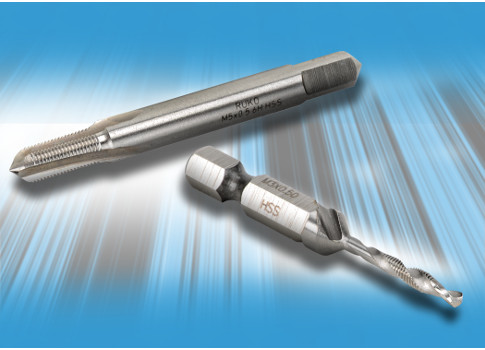U.S. power needs are handled via an electrical distribution system that was designed and built more than 50 years ago. Over the past 50 years, it’s been augmented repeatedly with additional power plants and power lines to be able to distribute electricity to the increasing number of end users. But this is both expensive and environmentally disturbing.
U.S. power needs are handled via an electrical distribution system that was designed and built more than 50 years ago. Over the past 50 years, it’s been augmented repeatedly with additional power plants and power lines to be able to distribute electricity to the increasing number of end users. But this is both expensive and environmentally disturbing.
Many are concentrating on how this existing power grid can be optimized. There are several ways to do this, including peak shaving and curtailment services. However, these are not very adaptive and are mostly industrial and more sophisticated.
While these methods help reduce the stress on the system that increased power consumption brings, they essentially are stop-gapping an inefficient and unreliable system. Service can be interrupted by something as simple as a squirrel entering a transformer, or something as frequent as a wind storm, because of the distance the power must travel to get to the end user.
Today’s electric grid simply sends energy down the line from where it’s generated to where it’s used, with no way to return any unused power to the power plant or any way to generate feedback about usage patterns or problems. But a high-speed communication infrastructure coupled with more intelligent devices would allow this sphere of control to expand, improving reliability and efficiency, while opening the door for more dynamic energy markets such as real-time pricing and demand response, allowing consumers to better control their use of energy and reduce costs.
What is the Smart Grid?
The Smart Grid is intended to be highly automated with technology that allows for real-time monitoring of energy usage and the capability to change and adapt your energy intake to save money, and more importantly, energy. It allows for integration of new technologies that might further the efficiency of producing and distributing energy. For example, it employs a set of technologies that allows end users to participate in the Smart Grid by adjusting their consumption automatically based on fluctuations in electricity availability or rates.
The Smart Grid also serves as a giant communications network, which would provide the ability to access important data about performance, demand and availability. It’s also designed to be self-healing. Smart meters and monitors strategically placed through the grid would enable it to respond quickly to power interruptions in a self-healing manner.
Why should a Smart Grid be pursued?
A Smart Grid offers a number of improvements over the current grid. Most notably, it provides a better way to efficiently generate power, while integrating renewable energy resources such as wind and solar — contributing a shot in the arm to sustainability and minimizing impact on the environment.
One of the more important reasons for building a Smart Grid would be the proliferation of automated electrical solutions that allow integration of renewable energy resources and energy storages devices such as electric car batteries. Such a grid would have the ability to distribute electricity to wherever it’s needed, and even have the ability to store it for later use.
Cost reductions are another improvement, but present multiple facets. The potential to gain efficiency, or generating just as much energy as needed, is one part. Buildings would adapt to the energy that’s available and store their own energy in the form of cold and warm air, water and electricity within UPSs — acting almost like a giant battery. It also opens the door to more control of usage, and mechanisms such as real-time pricing and demand response.
Reliability would also soar. In the U.S., it’s estimated that $100 billion is lost per year on power quality-related issues. By making power more local, you reduce the likelihood of disturbances between where the power is generated and end users.
What will change?
The Smart Grid will have the ability to alter the flow of power to increase capacity to places that need it, as well as dial back power to those who aren’t using it. Another big change will be the incorporation of renewable resources to help reduce greenhouse gas emissions.
In the future, consumers’ access to where energy is produced will change to become more local. Many will be installing and producing renewable energy sources themselves — solar cells, micro turbines, etc. — which will affect their need to get energy off of the large grid. Thus, they will have more decisions to make in terms of what is bought from the utility. They will need technology, software and services to make these decisions effectively.
Some of this is happening right now with progressive customers. For example, some are using photovoltaic and other co-generation technologies to save money as well as ease their burden on the grid. Others are participating in demand response programs. Put simply, demand response is the mechanism by which electric consumers reduce demand in response to changing supply conditions such as price fluctuations, demand charges or a direct request to reduce demand when the power grid reaches critical levels.
The role of smart meters
Metering will play an important role in opening a line of communication between consumers and energy suppliers in the Smart Grid, which will promote higher grid efficiency and reliability. Right now, most meters simply measure consumption for purposes of the utility generating an accurate bill.
But on a Smart Grid, new smart meters would be employed at the end-user level to gather accurate data about usage, which could then be used for real-time energy pricing or to receive requests to lower energy consumption during emergency grid situations.
Making the Smart Grid a reality will take a monumental effort — one that will be shared among the government, manufacturers and industry and the consumer. But the effort will reap rewards in terms of energy efficiency, grid reliability and environmental impact, which makes it an investment worth making. And it’s already starting. President Obama recently announced plans to modernize 3,000 miles of transmission lines and install smart meters in 40 million homes.
| Author Information |
| Mark Feasel is director of sales and marketing, energy solutions for Schneider Electric. |
What will change with the Smart Grid?
Today’s grid
One-way communication
Centralized generation
Radial topology
Few sensors
Blind
Manual restoration
Prone to failures and blackouts
Check equipment manually
Emergency decision making
Limited control over power flow
Limited price information
Few customer choices
Smart Grid
Two-way communication
Accommodates distributed generation
Network topology
Monitors and sensors throughout
Self-monitoring
Self-healing
Adaptive protection and islanding
Monitor equipment remotely
Predictive reliability
Pervasive control system
Full price information
Many customer choices
Smart Grid: an introduction
The U.S. Department of Energy’s Smart Grid Task Force has released a 48-page book called “Smart Grid: An Introduction.” To download a copy, go to



